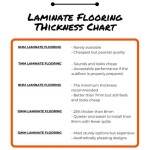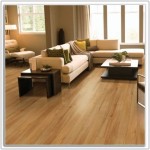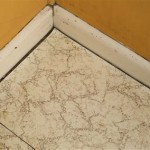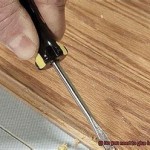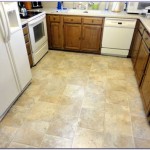```html
Resilient Vinyl Plank Flooring: A Comprehensive Guide
Resilient vinyl plank flooring (RVP), often simply referred to as vinyl plank flooring or LVP (Luxury Vinyl Plank), has become a dominant force in the flooring market, offering a compelling alternative to hardwood, laminate, and tile. Its popularity stems from its durability, versatility, aesthetic appeal, and relatively easy installation. This article provides a detailed examination of RVP flooring, covering its composition, benefits, types, installation methods, maintenance, and considerations for selecting the right product for specific needs.
The term "resilient" accurately describes a key characteristic of this flooring type. Unlike rigid materials, vinyl plank flooring possesses a degree of flexibility or "give" under pressure, contributing to its comfort underfoot and its ability to withstand impacts without readily cracking or chipping. This inherent resilience, combined with its waterproof or water-resistant properties, makes it a suitable choice for a wide range of residential and commercial applications.
Understanding the Composition of Resilient Vinyl Plank Flooring
RVP flooring is typically constructed in multiple layers, each serving a specific purpose to contribute to the overall performance and longevity of the product. While the precise composition can vary depending on the manufacturer and the specific product line, the following layers are commonly found:
Wear Layer: This is the top surface layer and the primary determinant of the flooring's durability and resistance to scratches, scuffs, and stains. A thicker wear layer, measured in mils (thousandths of an inch), generally indicates greater resistance to wear and tear. Residential applications typically require a wear layer of at least 6 mils, while commercial applications often necessitate 12 mils or more. The wear layer is often treated with a protective coating, such as urethane with ceramic bead technology, to further enhance its resistance to damage and simplify cleaning.
Print Layer: Situated beneath the wear layer, the print layer provides the flooring's visual appearance. High-resolution printing technology allows for realistic reproductions of wood grain, stone, tile, and other patterns. The quality of the print layer significantly impacts the overall aesthetic appeal of the flooring.
Core Layer: The core layer provides the structural stability and waterproof or water-resistant properties of the flooring. This layer is often composed of one of the following materials:
- WPC (Wood Plastic Composite): WPC cores are made from a combination of wood flour and plastic polymers. They are known for their water resistance, comfort underfoot, and sound absorption properties. WPC is generally more rigid and thicker than SPC.
- SPC (Stone Plastic Composite): SPC cores are composed of limestone powder and plastic polymers, resulting in a denser and more rigid core than WPC. SPC offers excellent indentation resistance, making it a good choice for high-traffic areas or spaces where heavy furniture will be placed. It is also highly water-resistant.
- Solid Vinyl Core: Some vinyl plank flooring features a solid vinyl core, offering a balance of durability, water resistance, and affordability.
Backing Layer: The backing layer provides stability and cushioning and can also contribute to sound absorption. Some vinyl plank flooring includes an attached underlayment on the backing layer, eliminating the need for a separate underlayment during installation.
Key Advantages of Choosing Resilient Vinyl Plank Flooring
The popularity of RVP flooring is driven by a multitude of benefits, making it an attractive option for homeowners and commercial property owners alike:
Durability and Longevity: RVP flooring is highly resistant to scratches, dents, stains, and fading, making it a durable choice for high-traffic areas and active households. The protective wear layer shields the underlying layers from damage, ensuring the flooring maintains its appearance for years to come. Regular cleaning and maintenance can further extend its lifespan.
Water Resistance or Waterproofing: Depending on the core composition, RVP flooring offers either water resistance or complete waterproofing. Flooring with WPC or SPC cores is typically waterproof, making it suitable for installation in bathrooms, kitchens, basements, and other areas prone to moisture exposure. Even water-resistant vinyl plank flooring is less susceptible to damage from spills and splashes compared to hardwood or laminate.
Aesthetic Versatility: RVP flooring is available in a vast array of styles, colors, and patterns, allowing for seamless integration with diverse design aesthetics. Realistic wood grain, stone, and tile visuals are readily available, providing the look of natural materials without the associated maintenance or installation challenges. The wide selection ensures that there is an RVP flooring option to suit virtually any décor.
Ease of Installation: Many RVP flooring products are designed for easy installation using a click-lock system, which allows planks to be securely interlocked without the need for glue or nails. This simplifies the installation process and makes it suitable for DIY projects. However, proper subfloor preparation is crucial for a successful installation. Professional installation is often recommended for complex layouts or uneven subfloors.
Comfort and Sound Absorption: RVP flooring provides a more comfortable walking surface compared to harder materials like tile or concrete. The resilient nature of the material provides a slight "give" underfoot, reducing fatigue. Additionally, some RVP flooring products feature integrated underlayment or core materials that offer sound absorption properties, minimizing noise transmission between floors.
Low Maintenance: RVP flooring is easy to clean and maintain. Regular sweeping or vacuuming is sufficient to remove loose debris. For deeper cleaning, a damp mop with a mild detergent is typically all that is required. The protective wear layer resists stains and spills, simplifying cleanup and minimizing the need for harsh chemicals or specialized cleaning products.
Cost-Effectiveness: Compared to hardwood, stone, or tile, RVP flooring often represents a more cost-effective flooring solution. The lower material costs, combined with the potential for DIY installation, can result in significant savings. However, it is important to consider the long-term value and durability of the flooring when making purchasing decisions.
Choosing the Right Type of Resilient Vinyl Plank Flooring
Selecting the appropriate RVP flooring for a particular application requires careful consideration of several factors, including the intended use, the level of traffic expected, the presence of moisture, and the desired aesthetic. Here's a breakdown of factors to consider:
Wear Layer Thickness: As previously mentioned, the wear layer thickness is a critical indicator of durability. For residential applications with moderate traffic, a wear layer of 6-12 mils is generally sufficient. For high-traffic areas or commercial applications, a wear layer of 12 mils or more is recommended.
Core Type: WPC cores offer greater comfort underfoot and sound absorption, while SPC cores provide superior indentation resistance. Consider the specific needs of the space when selecting the core type. For example, SPC may be a better choice for kitchens or dining rooms where heavy furniture is likely to be placed.
Water Resistance vs. Waterproofing: If the flooring is to be installed in an area prone to moisture, such as a bathroom or basement, opt for a completely waterproof RVP flooring product with a WPC or SPC core. Water-resistant vinyl plank flooring may be suitable for areas with occasional spills, but it is not recommended for areas with prolonged exposure to moisture.
Installation Method: Click-lock installation is ideal for DIY projects, while glue-down installation may be preferred for commercial applications or areas with high traffic. The type of subfloor will also influence the choice of installation method.
Style and Appearance: Choose a style and color that complements the existing décor and meets the desired aesthetic. Consider the size of the planks, the texture of the surface, and the realism of the print layer.
Budget: RVP flooring is available in a wide range of price points. Set a budget and compare different options within that range, considering the long-term value and durability of the flooring.
Manufacturer Reputation and Warranty: Choose a reputable manufacturer that offers a comprehensive warranty. Read reviews and compare warranties to ensure that the flooring is backed by a solid guarantee.
Proper subfloor preparation is vital for a successful and long-lasting RVP flooring installation. The subfloor must be clean, level, and dry. Any imperfections or irregularities in the subfloor can telegraph through the flooring, causing unevenness, instability, and premature wear. Addressing subfloor issues before installation is crucial for achieving optimal results.
```
Types Of Resilient Flooring Floor Guide Precision

Why Resilient Flooring Is Perfect For Families Ozburn Hessey

Natural Woodgrains Lvt Resilient Flooring By Interface

Shaw Take Home Sample Primavera Echo Resilient Vinyl Plank Flooring 5 In X 7 Sh 942274 The Depot

All About Resilient Vinyl Flooring D S

Shaw Take Home Sample Primavera Bayou Resilient Vinyl Plank Flooring 5 In X 7 Sh 942728 The Depot

Resilient Vinyl D S Flooring

Tranquility Ultra 5mm River Walk Oak Waterproof Luxury Vinyl Plank Flooring 6 In Wide X 48 Long Ll

Shaw Take Home Sample Sydney Fog Resilient Vinyl Plank Flooring 5 In X 7 Sh 136487 The Depot

New Frontiers In Resilient Floors 2024 06 14 Floor Trends Installation
Related Posts

